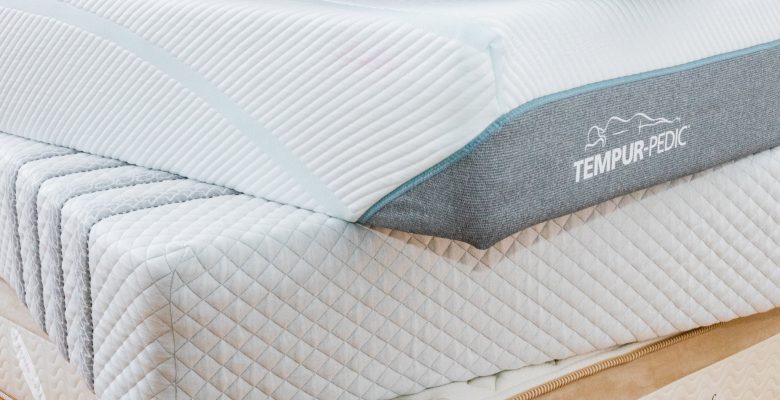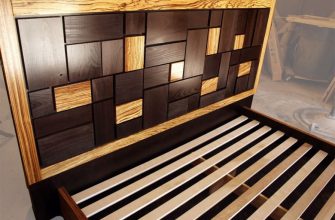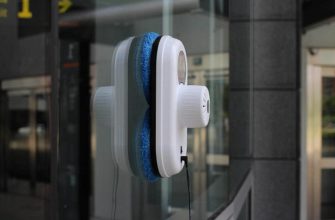Choosing a new mattress can be an overwhelming experience. With so many different types, brands, and models to choose from, it’s hard to know where to start. This ultimate guide breaks down everything you need to know about shopping for the perfect mattress.
A mattress is one of the most important furniture purchases you’ll make. You spend about a third of your life sleeping, so having the right mattress is essential for your health, comfort, and quality of sleep. The wrong mattress can lead to back and neck pain, sleepless nights, and grogginess during the day.
Luckily, being an informed shopper will set you up for success in finding a mattress you’ll love sleeping on for years. This guide covers factors to consider when mattress shopping, understanding your needs, types of mattresses, and expert tips for selecting the best option. You’ll also learn where to shop, how to get the best deal, mattress care recommendations, and final thoughts to ensure a smooth purchasing process.
With this comprehensive mattress buying guide’s help, you’ll be rested, supported, and ready to start each day refreshed thanks to the perfect new mattress!
- Importance of Choosing the Right Mattress
- Factors to Consider When Shopping for a Mattress
- Understanding Your Mattress Needs
- Assessing Your Sleep Preferences and Patterns
- Considering Health and Comfort Requirements
- Types of Mattresses
- Innerspring Mattresses
- Memory Foam Mattresses
- Latex Mattresses
- Hybrid Mattresses
- Airbed Mattresses
- Selecting the Right Mattress for You
- Firmness Levels and Support
- Motion Isolation and Responsiveness
- Temperature Regulation
- Durability and Longevity
- Warranty and Return Policies
- Additional Considerations
- Bed Size and Compatibility
- Adjustable Bases and Accessories
- Where to Shop for Mattresses
- Brick-and-Mortar Stores
- Online Retailers
- Specialized Mattress Stores
- Making the Purchase
- Comparing Prices and Financing Options
- Reading Reviews and Gathering Recommendations
- Negotiating and Finalizing the Sale
- After-Purchase Care
- Setting Up and Maintaining Your Mattress
- Addressing Any Issues or Concerns
- Final Considerations for a Successful Mattress Shopping Experience
Importance of Choosing the Right Mattress
Why go through the effort of learning how to shop for a mattress? You may be tempted to simply replace your old mattress with a similar new one or choose whatever option is cheapest. However, finding the optimal mattress has major impacts on your daily life.
The right mattress keeps your spine properly aligned as you sleep, adapting to your body’s contours. This alleviates pressure points, promotes circulation, and allows you to fully relax. You’ll sleep deeply and wake up recharged without any stiffness or soreness.
In contrast, the wrong mattress causes misalignment of the neck and back. This leads to tossing and turning throughout the night as you try to get comfortable. You’ll wake frequently or struggle falling back asleep. The lack of restful sleep leaves you drained the next day.
Choosing an unsuitable mattress for your needs can also contribute to or worsen back and joint problems. It may exacerbate pain, numbness, and tingling from conditions like arthritis, fibromyalgia, injuries, or sciatica.
Your mattress impacts much more than just comfort. Protecting your physical health, mental health, productivity, immune system, relationships, and quality of life relies heavily on high-quality sleep each night. Investing time into choosing the optimal new mattress pays dividends through better rest for years.
Factors to Consider When Shopping for a Mattress
Several key factors influence which mattress is best for your needs:
- Mattress type: The main options include innerspring, memory foam, latex, hybrid, airbed, and adjustable. Each has pros and cons.
- Firmness and support level: The right firmness keeps your spine aligned while cushioning pressure points.
- Quality materials: Durable, high-quality materials increase longevity and performance.
- Special features: Considerations like motion isolation, bounce, cooling, and edge support.
- Cost and budget: Set a comfortable budget, compare prices, and look for sales, deals, and financing options.
- Sleeping position: Your dominant sleeping position determines support needs.
- Body type: Your weight and shape affect which mattresses provide the best fit.
- Allergies: If you have allergies, look for hypoallergenic and natural materials.
Prioritizing these key factors will help you narrow down the perfect mattress choice from the myriad options on the market. Next, we’ll go over specifics on understanding your personal sleep needs.
Understanding Your Mattress Needs
Mattress needs vary significantly from one person to the next based on sleeping habits, health conditions, pain issues, and personal preferences. Before shopping, analyze these considerations about how you sleep.
Assessing Your Sleep Preferences and Patterns
Think through these questions about your unique sleep tendencies:
- What sleep position do you use most – side, back, stomach, or combination?
- Do you share the bed with a partner and need to minimize motion transfer?
- Do you tend to sleep hot or run cold when sleeping?
- Do you like sinking into a soft surface or prefer sleeping “on” an evenly firm surface?
- Do you have any pain, stiffness, or soreness when you wake up?
- How many hours of sleep do you get per night on average?
- Do you experience insomnia, interrupted sleep, or other issues?
Factoring in these personal preferences and tendencies will guide you effectively as you compare different mattress types and options.
Considering Health and Comfort Requirements
Next, think through any physical or medical considerations for your new mattress:
- Do you have any chronic pain, injuries, arthritis, or pressure points that need cushioning?
- Does your current mattress exacerbate back, neck, joint, or muscular pain?
- Do you need excellent pressure relief and body-contouring properties?
- Do you suffer from allergies or respiratory issues that require special materials?
- Do you tend to sleep hot and want cooling or breathable materials?
Addressing health issues, chronic conditions, and common discomfort through your mattress choice is key for restfulness. This guides optimal support, pressure relief, and alignment.
Types of Mattresses
Now that you know what to look for in your ideal mattress, next we’ll compare the pros, cons, costs, and characteristics of the most common mattress varieties.
Innerspring Mattresses
Innerspring mattresses contain steel coil systems ranging from hundreds to thousands of interconnected, individually-pocketed springs. This variety accounts for about 65% of mattress sales.
Pros:
- Most affordable mattress type.
- Good bounce and ease of movement.
- Many firmness and thickness options.
- Coil system promotes airflow to reduce heat retention.
Cons:
- Coils can wear down, sag, squeak, and poke through over time.
- Motion transfers easily across the whole mattress.
- Doesn’t adapt closely to body shape for pressure relief.
- Can be noisy.
Cost range: $100 to $1,200
Memory Foam Mattresses
Memory foam mattresses contain layers of viscoelastic polyurethane foam that soften from body heat and weight. This adjusts to the sleeper’s shape for customized support.
Pros:
- Excellent pressure relief and body contouring.
- Isolates motion well for undisturbed sleep.
- Fewer pressure points and pain complaints.
- Good for arthritis and injury recovery.
Cons:
- Heat retention can lead to sleeping hot.
- Slow rebound and response time.
- Off-gassing odor during initial expansion.
- Prone to impressions and sagging over time.
Cost range: $450 to $2,000
Latex Mattresses
Latex mattresses use sustainable sap extracted from rubber trees, offering resilience and contouring. Natural, blended, and synthetic latex options exist.
Pros:
- Responsive bounce and ease of movement.
- Sleeps cool due to airflow through material.
- Antimicrobial and resistant to dust mites.
- Low motion transfer between sleep partners.
Cons:
- Heavy weight and difficulty moving.
- Higher initial cost.
- Distinct off-gassing rubber smell when new.
- Varying lifespans by type from 5-12 years.
Cost range: $800 to $2,000
Hybrid Mattresses
Hybrid mattresses combine metal coils with foam comfort layers for bounce, increased airflow, pressure relief and motion isolation in one mattress.
Pros:
- Balances benefits of springs and foam.
- Increased durability over lone foam.
- More breathability than foam alone.
- Responsive surface for movement.
Cons:
- Higher average price point.
- Still potential for impressions over time.
- Weight makes rotating difficult.
- Coil issues still possible though less likely.
Cost range: $1,200 to $2,500
Airbed Mattresses
Airbed mattresses use air chambers instead of foam or coils that you can inflate or deflate to desired firmness preferences.
Pros:
- Customizable firmness for each side.
- Pressure relief from dispersion across chambers.
- Minimal motion transfer.
Cons:
- Susceptible to air leaks and punctures.
- Makes noise when moving around.
- Needs re-inflating to maintain pressure.
- Less conforming than memory foam options.
Cost range: $1,000 to $4,500
Selecting the Right Mattress for You
With your sleep needs and mattress type options identified, next we’ll go over expert recommendations for choosing the best mattress for different priorities.
Firmness Levels and Support
Mattress firmness levels range from soft (3) to very firm (8) using an industry standard scale. The right firmness cradles your body evenly to keep the spine aligned.
Side sleepers need a softer mattress to fill the gap between hip and shoulder. This prevents the hips and shoulders from dipping down and twisting the spine.
Back sleepers need a medium to medium firm mattress for even support. A mattress that’s too soft allows the hips to sink down and pushes the spine out of alignment.
Stomach sleepers require a firmer mattress to keep the hips elevated even with the shoulders to avoid back strain.
No matter your sleeping position, support layers should reinforce the heaviest parts of your body without sagging over time.
Motion Isolation and Responsiveness
For couples, motion isolation prevents you from disturbing your partner when moving in bed. Memory foam and latex do the best job absorbing movement.
However, sleepers who change positions frequently may prefer bounce and responsiveness to switch positions easily. This is better with innerspring, latex and hybrid options.
Temperature Regulation
If you sleep hot, prioritize breathable designs allowing airflow and heat dissipation. Latex, innerspring, and hybrid varieties tend to sleep the coolest.
Adding features like gel infusions, copper, or phase change materials helps regulate temperature in warmer memory foam. Some mattresses even have removable covers to adjust warmth.
Durability and Longevity
Higher density foams, natural latex, and thicker gauge coils increase durability and mattress lifespan. Average expectancies range from 7 years (lower-end polyfoam) up to 12 years (high-end latex).
Flippable designs also wear evenly on both sides. Reinforced edge support maintains surface integrity over time. And naturally antimicrobial latex deters deterioration.
Warranty and Return Policies
Most mattress warranties cover defects and impressions greater than 1″ deep. Average coverage spans 10 years. Higher quality materials earn warranties of 15-25 years.
Many online mattress companies offer generous 365+ night trial periods. This gives you plenty of time to test out a mattress.
Compare policies between retailers carefully to identify best options before purchasing.
Additional Considerations
Bed Size and Compatibility
Make sure to choose the right mattress size for your bedroom furniture. Twin and twin XL mattresses work well for kids and guest rooms while full, queen, and king sizes fit most master bedrooms.
Adjustable bases, specific bed frames, and headboards can restrict certain thick and heavy mattresses from working well. Always measure carefully and check manufacturer guidelines.
Adjustable Bases and Accessories
Today’s high-tech adjustable bases let you elevate the head and foot of the mattress for customized positioning. This works well for pain issues or watching TV in bed. Models range from basic to fully-featured.
Mattress toppers offer an affordable way to adjust softness, coolness, or support. Added pillows provide extra pressure relief. And mattress protectors shield against spills, stains, and damage to extend mattress lifespan.
Where to Shop for Mattresses
With an endless array of brands and retailers selling mattresses, here is a breakdown of where to find the best selection and deals:
Brick-and-Mortar Stores
The benefit of stores is trying mattresses first-hand. Drawbacks include higher prices, pushy sales tactics, and limited inventory. Be prepared to negotiate to bring home the best deal.
Online Retailers
Online mattress shopping allows convenient at-home delivery for free or low cost. Drawbacks include lack of try-before-you-buy and potential for shipping damages. Many online brands offer generous trial periods though.
Direct-to-consumer online brands cut out retailer markups, passing savings to customers. But lack of reviews can make judging quality difficult.
Specialized Mattress Stores
Dedicated local mattress showrooms offer wide selections in one place to test. Higher pressure sales and prices tend to come with a more personalized experience from knowledgeable staff.
Ask about price match guarantees to secure specialty store service and competitive pricing. Be sure to negotiate rather than accepting first quotes.
Making the Purchase
Once you decide on the ideal mattress type, model, retailer, and delivery method, here are final tips for seamlessly completing your purchase:
Comparing Prices and Financing Options
Always compare mattress prices across multiple retailers. Negotiating tactics like bundling delivery or adding accessories can help secure discounts.
Financing options are commonly available with deferred interest promotions. This breaks costs into manageable monthly payments. Just be sure to pay in full before promotional period ends.
Reading Reviews and Gathering Recommendations
Check third-party review sites and forums for transparent feedback on specific mattresses. Focus on trends instead of outliers for the most accurate evaluations.
Talk to friends, family, and neighbors to learn which mattress brands they recommend after first-hand use. This gives you added assurance.
Negotiating and Finalizing the Sale
Don’t be afraid to negotiate mattress pricing, especially with major purchases. Even big box stores and national chains offer some wiggle room to cut costs.
When checking out, triple check charges for accuracy. Review delivery timelines, setup services, old mattress removal terms, and trial periods. This prevents any payment or service issues down the line.
After-Purchase Care
Caring for your mattress properly is key to optimizing its comfort and longevity. Follow these usage and maintenance guidelines:
Setting Up and Maintaining Your Mattress
After delivery, let your mattress fully air out and expand before adding sheets. For added protection, use a mattress pad or protector.
Rotate your mattress head-to-toe every 3-6 months to prevent uneven wear and extend its usable life. This prevents body impressions from concentrating in one area over time.
Vacuum the mattress surface occasionally to remove dust, skin cells, and other debris that can degrade materials and shorten mattress lifespans.
Addressing Any Issues or Concerns
If you experience discomfort, lack of support, excessive heat, or other issues, first give your body time to adjust to the new mattress, typically a few weeks.
Ongoing problems past the adjustment period may require a different firmness option, mattress topper, or warranty claim if defects arise. This is where generous sleep trials and warranties pay off.
Final Considerations for a Successful Mattress Shopping Experience
The key to finding your perfect mattress involves understanding your needs, comparing different varieties, testing out options, and making an informed decision based on quality, value, and performance.
Armed with the mattress shopping fundamentals from this guide, you can confidently navigate this important purchase decision. Follow these best practices for identifying the ideal model to provide restful sleep and better health for years to come.
Sweet dreams and happy mattress hunting!









